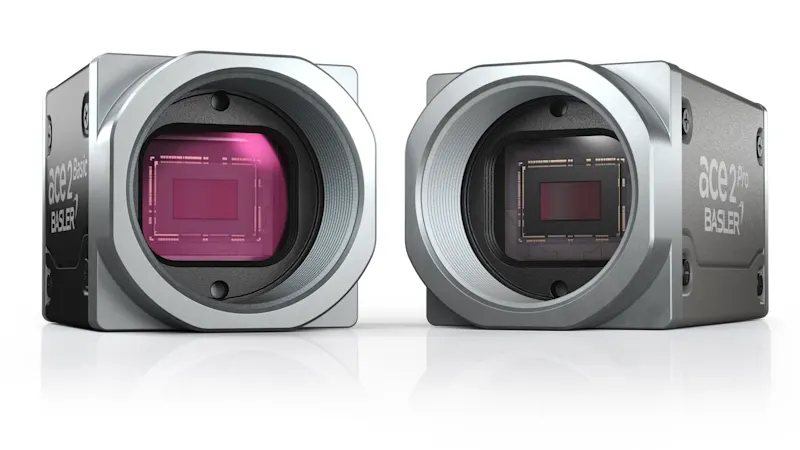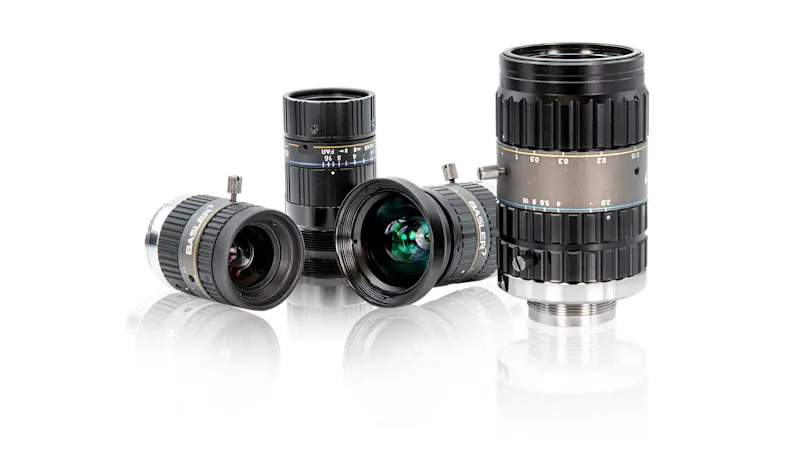Goal or no Goal? Machine Vision in Football
- Customer
- vieww GmbH
- Location
- Aachen, Germany
- Date
- 2023
What are Goal Line Technology (GLT) and Video Assistant Referees (VAR) all about?
The question of whether or not a soccer ball has entirely crossed the goal line and therefore counts as a goal can decide more than just a game. Sometimes these decisions also determine decades of discussions in expert circles and at regulars tables. The famous Wembley goal that helped decide the 1966 World Cup is certainly the best-known example.
For several years now, referees have been able to rely not only on their own senses, but also on the accurate assessment of vision-based assistance systems to make these critical decisions.
Goal Line Technology marks the beginning
Goal Line Technology (GLT) systems use machine vision to check the position of the ball on or behind the goal line and then signal the referee for their decision. These systems were introduced in 2013 by the German company vieww and were certified by FIFA in the same year. The following year, the system (then called GoalControl) was used at the 2014 FIFA World Cup in Brazil.
Assistance in tricky situations
Today, the cameras are no longer limited to assisting referees on the goal line. The vieww VAR (Video Assistant Referee) system provides detailed images throughout the entire match and is an important decision-making aid. It includes the VOL (Virtual Offside Line) system, which has also been certified by FIFA, and helps referees determine possible penalties, send-offs, or offside positions. With VAR, wrong decisions in soccer can be significantly reduced.
Since 2022, vieww GmbH and its operating partner have been equipping the German Football League (DFL) with all referee assistance technologies.
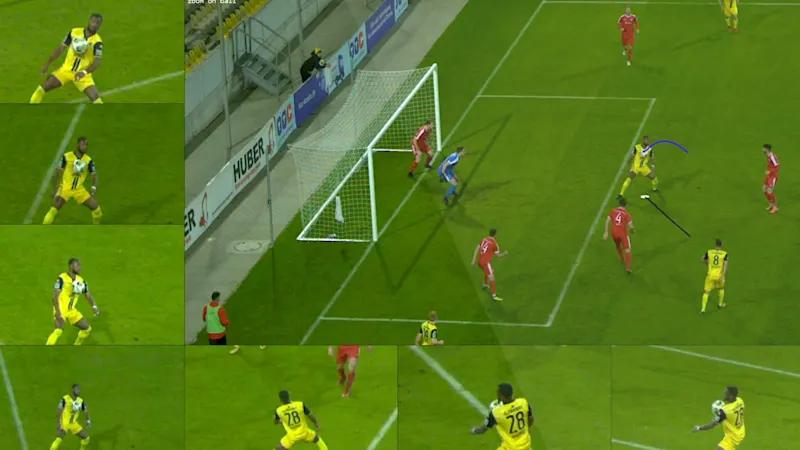
The challenge for assistance systems in soccer
Soccer is all about speed and precision. Professionals run and kick the ball at high speed, but a few millimeters can make the difference between an offside position or a regular goal. Meanwhile, tens of thousands of fans in the stadium and millions watching on TV cannot wait long for referees decisions. It goes without saying, of course, that these decisions must be made not only quickly, but also correctly.
Machine vision in soccer: highly precise and reliable
As a result, the market demands assistance systems that support referee decisions with high accuracy and reliability, while delivering results very quickly. It is important for the VAR system to be able to accurately capture and analyze every situation on the field in real time.
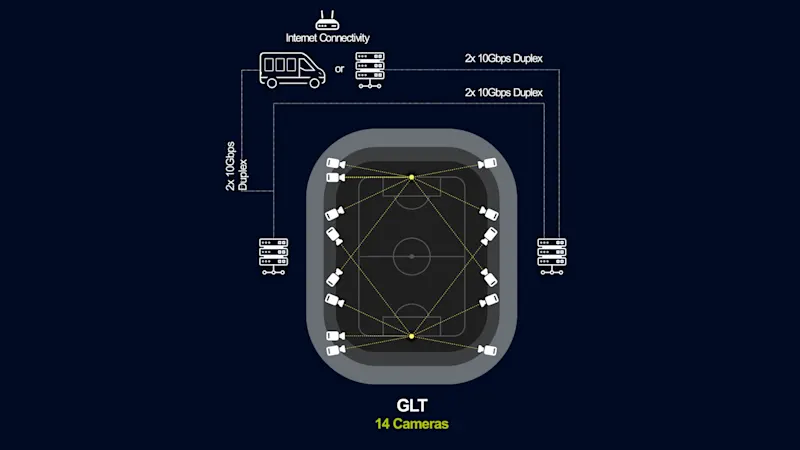
Included: Basler ace 2 cameras
The setup for the goal-line technology in the stadium consists of 14 cameras recording 200 frames per second (fps).
Basler ace 2 color cameras from the Basic line are used, which are equipped with the powerful Computer Vision Feature Set and can be easily integrated thanks to the pylon software. In addition, various Basler fixed focal length lenses are used for image capture. The Basler ace 2 cameras are the heart of the systems and are built into special housings around a mini computer with very powerful graphics cards and heating or ventilation systems.
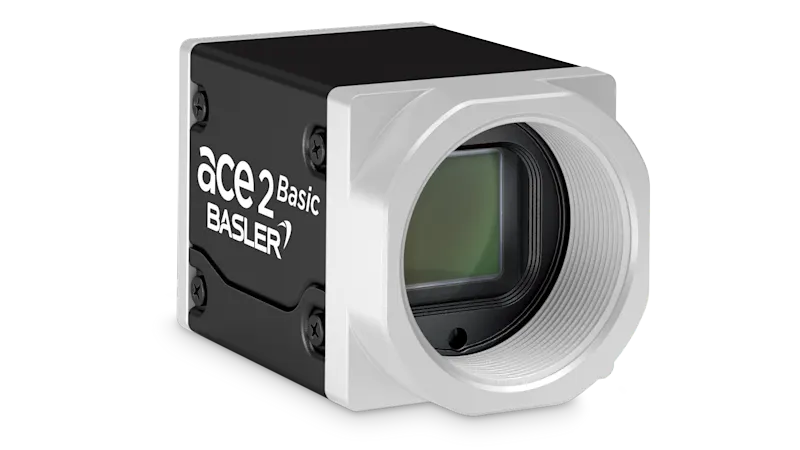
Increasing demands on technology
Due to the high speeds involved in the game, a high frame rate is essential, but image quality is also an important aspect, as the transmission of images to broadcasters requires high quality to ensure a clear and reliable representation of what is happening on the field. In addition, it is expected that the broadcasters' requirements for image quality will continue to increase in the future. Therefore, it is necessary for the system to be able to adjust the images according to the requirements for image sharpness, contrast, color reproduction, etc., in order to ensure optimal transmission.
These high requirements originally also posed challenges for our ace 2 cameras. To achieve a sufficiently high frame rate, the images are transmitted in Bayer RG8 format. Due to debayering and re-debayering within the camera, demosaicing effects occur during transmission to the PC, which negatively affect the image quality.
Basler has expanded the repertoire of demosaicing modes specifically for this vieww challenge and now offers a Unilinear Demosaicing Mode as a feature. The Unilinear Demosaicing Mode avoids unwanted color artifacts while achieving the required high frame rate and excellent color reproduction for the human eye. This feature has been available as standard on all ace 2 cameras since the project was completed.
We are a long-standing customer of Basler and appreciate their solution-oriented cooperation! We receive very individual solution proposals from them, meeting the special requirements of our products. We continue to count on good cooperation with Basler to further "expansively" serve the market!
The technical solution for GLT and VAR in the stadium
With Basler's ace 2 cameras, the latest vieww GLT system provides the high level of ball tracking accuracy needed to make precise decisions in soccer. The reliability of the system is subject to the strict control of FIFA, which certifies the equipment and tests it annually in each stadium.
The camera systems are permanently installed in each stadium according to the individual architecture. This requires very precise measurements that take into account camera angles, field coverage, and light and weather influences. However, after calibration, the system can be operated remotely, allowing stadiums, leagues and federations to make significant cost savings.
Excellent images for just decisions
In addition to Goal Line Technology, vieww also offers the images of the GLT cameras for VAR systems. For this purpose, vieww converts the SDI signals into high quality JPEG images. Each image is captured separately, like a photograph, to avoid loss of detail. Because the ace 2 cameras record at 200 fps instead of the 50 fps typically used for television broadcasts, the referees have more images of the situation at hand. At the same time, the system offers a very fast response time because the intelligent server/client concept developed by vieww does not require high data transfer rates.
The cameras, which are synchronized to the microsecond, efficiently process the images and transmit them to the servers, which provide the data for real-time ball tracking, broadcast feeds and match data. Decades of debate over whether or not a ball has crossed the line are finally a thing of the past: The transmission time to the referee's watch, which reliably indicates whether a goal has been scored, is less than one second.
Products for this solution
Looking to implement a comparable solution? These products will help you.
